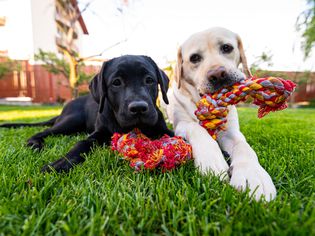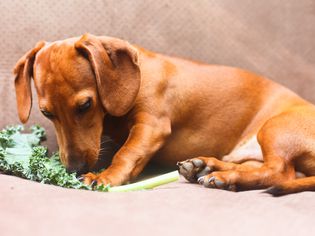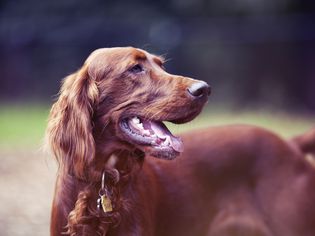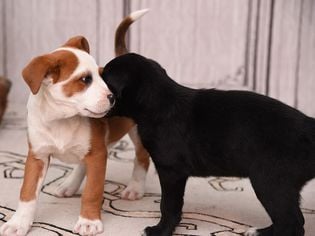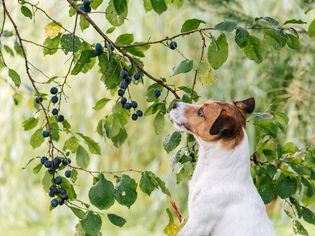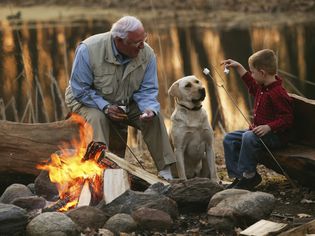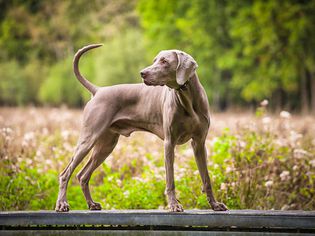The bull terrier is a medium-to-large dog breed from England that has a short, smooth coat and a unique “egg-shaped” head. Their ears are small and pointed, and their eyes also are small with a triangular shape. Overall, these dogs have a solid, muscular build. They reach a height of 21 to 22 inches and weigh around 50 to 70 pounds.
Bull terriers were originally bred for dog fighting but are now considered friendly. They tend to be quite entertaining and energetic companions—goofy and stubborn, at times. Bull terriers are often called a “kid in a dog suit.” Bull terriers compete frequently as show dogs and are known in pop culture as the "Target dog."
Learn more about the bull terrier, including history, exercise needs, health, and more.
Breed Overview
GROUP: Terrier
HEIGHT: 21 to 22 inches
WEIGHT: 50 to 70 pounds
COAT: Short, smooth
COAT COLOR: Nearly any color, including white, red, fawn, black, blue, or brindle
LIFE SPAN: 12 to 13 years
TEMPERAMENT: Affectionate, lively, friendly
HYPOALLERGENIC: No
ORIGIN: England
Characteristics of the Bull Terrier
The bull terrier generally has a friendly and comical personality. They tend to get along with people well but don’t always like other dogs. A high energy level and love of playtime also shape the bull terrier’s temperament.
Bull terriers are also incredibly strong— one of the strongest dogs for their size— with a bite force is 269 PSI. But if they are properly trained and socialized, they are not aggressive.
| Affection Level | High |
| Friendliness | High |
| Kid-Friendly | Medium |
| Pet-Friendly | Low |
| Exercise Needs | High |
| Playfulness | High |
| Energy Level | High |
| Trainability | Medium |
| Intelligence | Medium |
| Tendency to Bark | Medium |
| Amount of Shedding | Medium |
History of the Bull Terrier
Inhumane bloodsports involving animals became popular in Britain around the 13th century. In particular, a sport known as bull-baiting involved a bulldog fighting a tethered bull as people bet on the results.
Britain banned such bloodsports in the 1800s. But some people took them underground instead. Rather than bull-baiting, which was too conspicuous, they focused on dogfighting. And they wanted more fiery and nimble dogs, so they crossed their bulldogs with various terriers. Several breeds arose from this, including the bull terrier.
As dogfighting diminished toward the mid-1800s, breeders worked to refine the bull terrier to make them more of a companion dog. They bred for a sweeter temperament and less rugged appearance. It would still take several more decades before the dog acquired the trademark curved head.
The American Kennel Club (AKC) first recognized the breed in 1885. There have been several notable bull terriers throughout history. President Theodore Roosevelt owned a bull terrier, and bull terriers have helped to market both Bud Light (Spuds MacKenzie the dog) and Target (Bullseye the dog).
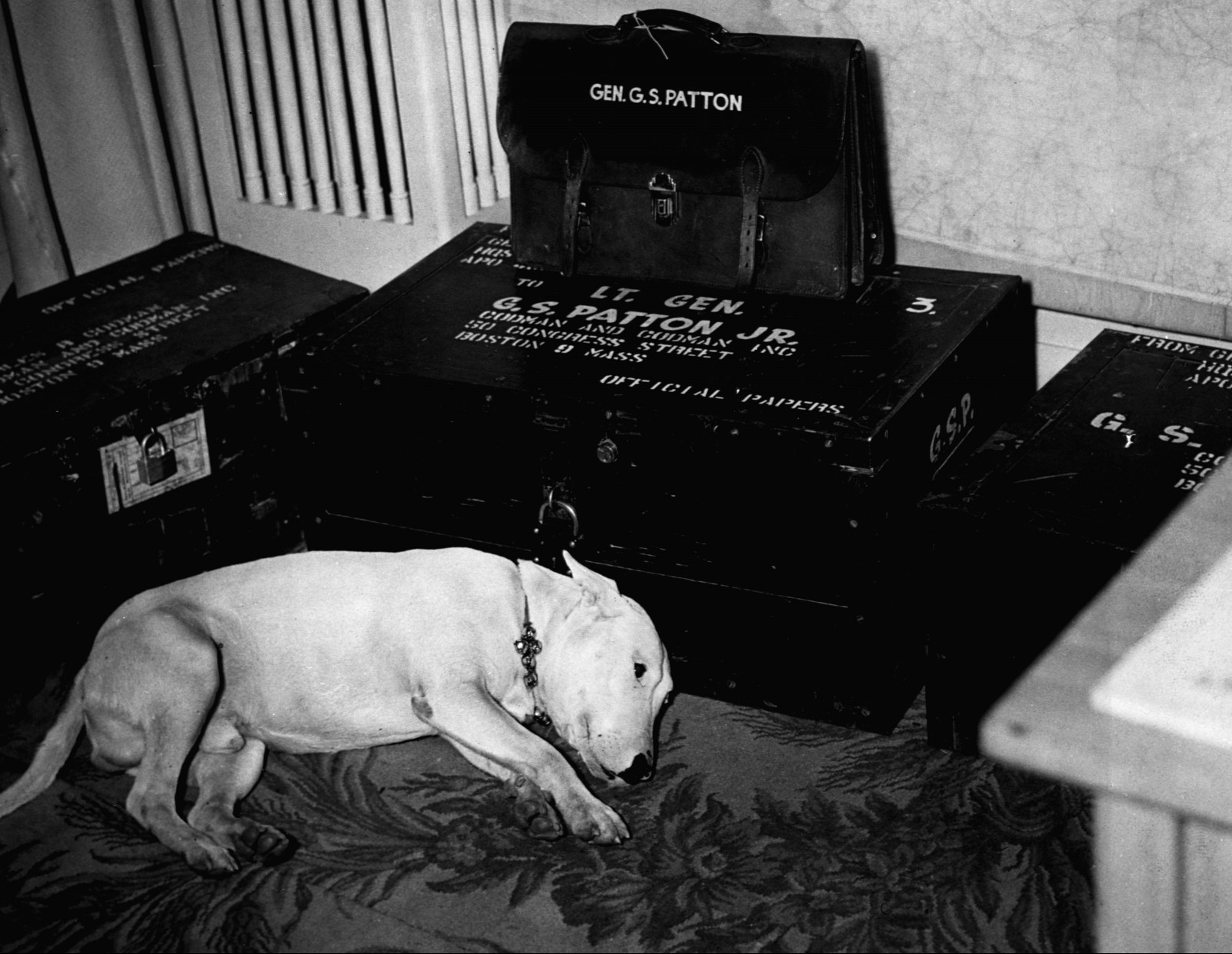
CORBIS / Getty Images
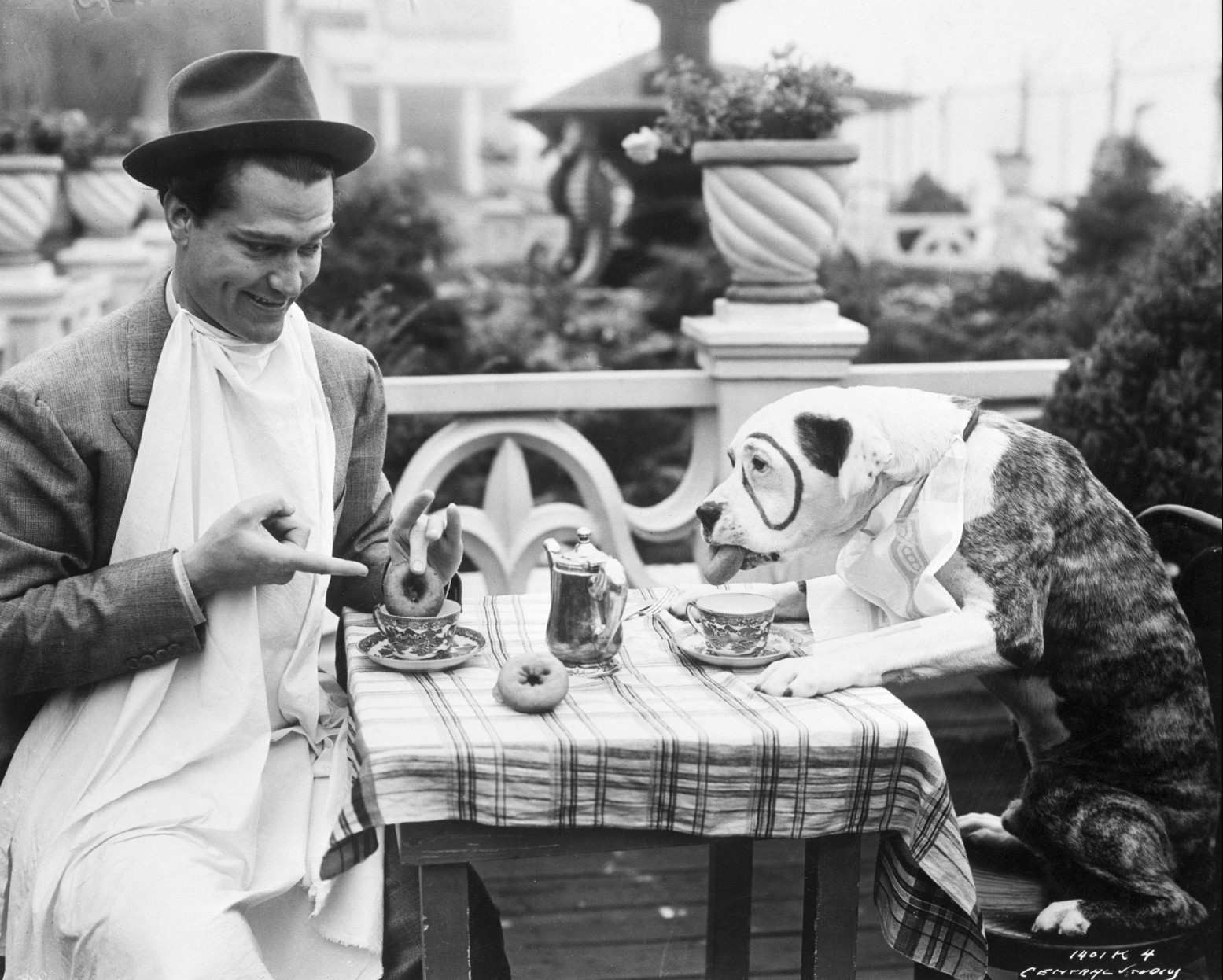
Bull Terrier Care
Bull terriers should get a fair amount of exercise each day, and they require minimal grooming. It's also important to provide training and socialization starting at a young age.
Exercise
Provide at least one to two hours of exercise per day for your bull terrier to help burn high levels of mental and physical energy. Multiple walks per day are ideal, along with jogs, hikes, games of fetch, and other play. Puzzle toys can help to challenge your dog mentally as well. Plus, dog sports, such as agility and tracking, can provide both mental and physical stimulation.
Always keep your bull terrier on a leash or in a securely fenced area when outside, as not all bull terriers will be friendly if they encounter an unfamiliar dog. These dogs may not do well at dog parks since they can be aggressive with unfamiliar animals, but each dog is an individual!
The bull terrier's short coat doesn't offer much protection in cold weather, so limit outdoor exercise sessions in the cold, and consider providing your dog with a coat or sweater. They also don’t tolerate heat well, so ensure your dog isn’t exposed to high temperatures and humidity levels for long periods in the warmer months of the year.
Grooming
The extremely short, smooth coat of the bull terrier requires little maintenance. Only basic grooming is necessary. Plan to brush your bull terrier weekly with a soft-bristle brush or grooming mitt to remove loose fur and distribute skin oils. Your dog might have higher periods of shedding, often in the spring and fall, during which you’ll have to brush more frequently to keep up with the loose fur.
Bathe your bull terrier every month or so, depending on how dirty they get. And check their nails monthly as well to see whether they need a trim. Also, look in their ears at least every week for wax buildup, debris, and irritation, and brush their teeth every day.
Training
Proper obedience training and socialization are essential to owning a bull terrier. When it comes to training, it’s important to start them young to prevent bad habits from forming. Bull terriers can be stubborn when it comes to training, but they are highly intelligent. Always use positive reinforcement methods. They tend to respond best when training sessions feel like a game rather than work.
Moreover, aim to socialize your dog with different people and other dogs from a young age to boost your dog's comfort and confidence. Positive experiences can go a long way to ensuring that your bull terrier is well-mannered. But some bull terriers have a difficult time being comfortable around other dogs, especially unfamiliar dogs, largely due to the breed's fighting history. And consequently there is the potential for aggression.
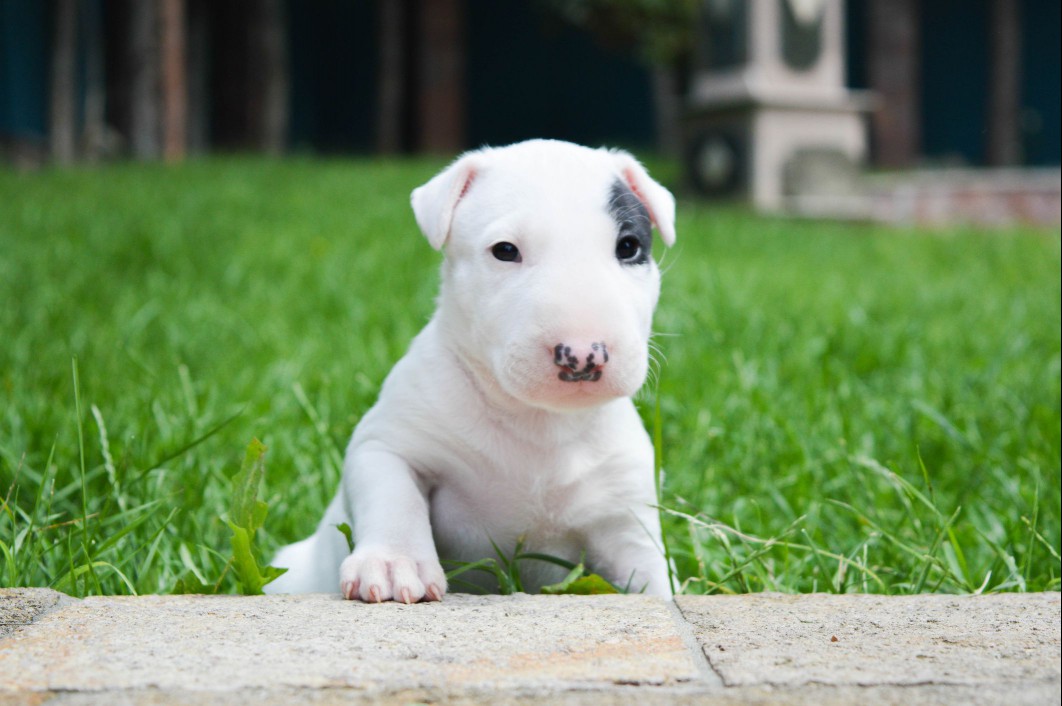
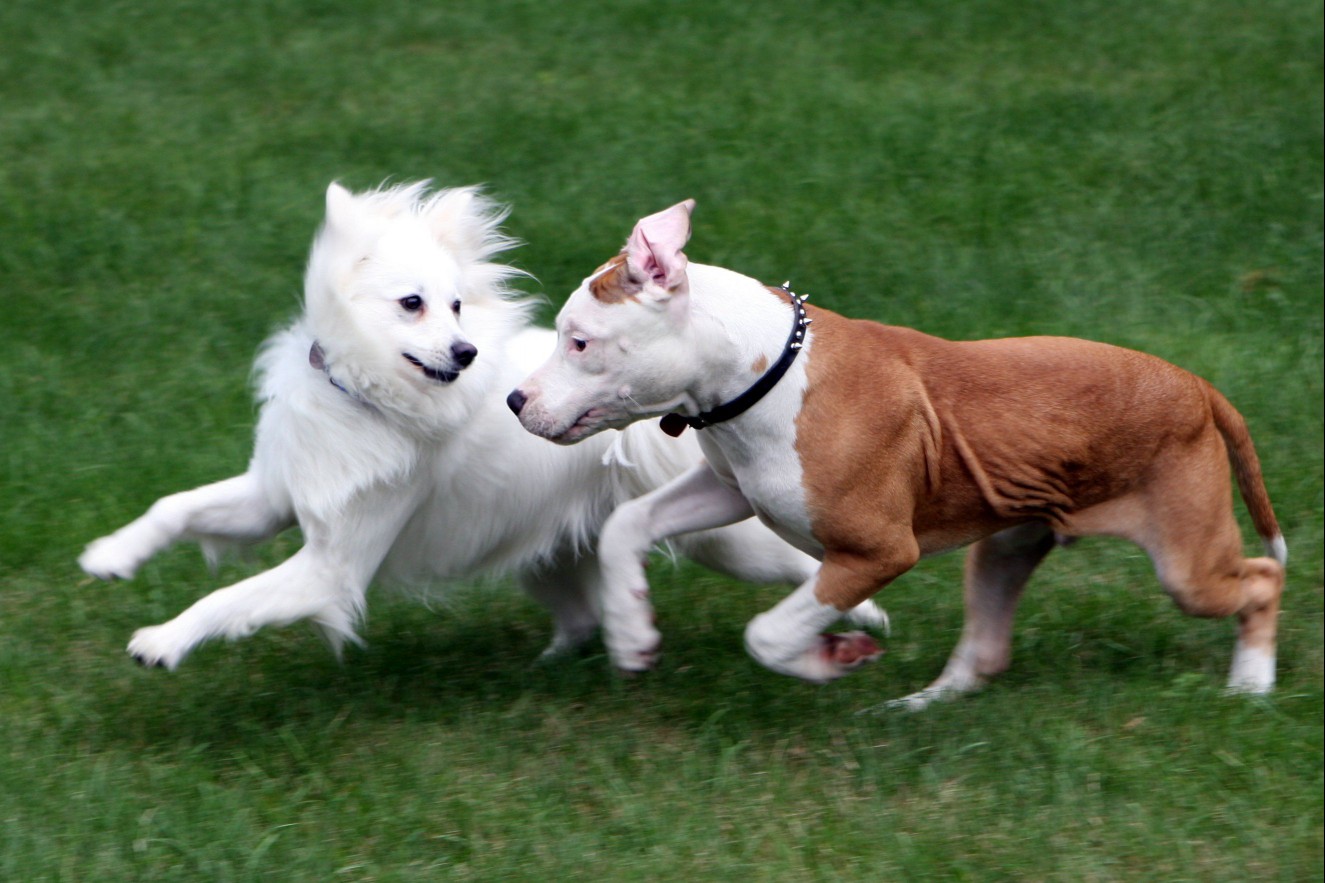

Common Health Problems
Bull terriers live generally healthy lives, but they are prone to some hereditary health issues, including:
- Deafness: Bull terries are prone to deafness and the white-coated variety is especially prone. Hearing loss can occur in one or both ears.
- Kidney disease: Hereditary nephritis can occur in bull terriers. It causes renal failure at varying ages.
- Heart disease: Mitral valve disease is a common condition in bull terriers. This is when the mitral valve becomes enlarged and begins to leak.
- Luxating patella: If your bull terrier's knee slips out of place routinely, this is called a luxating patella. With a mild case, dogs can tolerate this for life.
- Skin and coat problems, including allergies: Skin problems like atopic dermatitis are common in bull terriers. They have innately sensitive skin, making them prone to issues.
Diet and Nutrition
Make sure fresh water is always available to your bull terrier, and feed a quality, nutritionally balanced canine diet. In particular, it’s important for bull terriers to receive adequate calcium to support their bone development, especially when they are puppies.
It’s common to feed two measured meals per day to prevent overfeeding, but you should always run both the type of diet and the amount by your vet to make sure you’re meeting your dog’s individual needs.
Where to Adopt or Buy a Bull Terrier
Bull terriers are a fairly popular dog breed, so be sure to check local animal shelters and rescue groups for a dog in need of a home if you’re looking to acquire a bull terrier. If you want a puppy from a reputable breeder, expect to pay around $500 to $3,500, though this can vary widely.
For further information to help you find a bull terrier, check out:
- Bull Terrier Club of America
- Bull Terrier Rescue
Bull Terrier Overview
Bull terriers can make good pets, but they aren’t right for everyone. These dogs require a lot of training and socialization to make sure they’re well-mannered around people and other animals, and they can be aggressive toward other dogs.
Pros of Bull Terriers
- Affectionate and playful
- Basic grooming needs
- Can be good for families with older children
Cons of Bull Terriers
- Not always friendly with other dogs
- Can be stubborn about training
- Requires rigorous daily exercise
More Dog Breeds and Further Research
Before bringing home a bull terrier, do plenty of research to ensure that the breed is right for your lifestyle. Talk to bull terrier owners, rescue groups, reputable breeders, and veterinarians to learn more.
If you’re interested in similar breeds, check out:
- American Staffordshire Terrier
- Staffordshire Bull Terrier
- Boston Terrier
There’s a whole world of potential dog breeds out there—with a little research, you can find the right one to bring home!
- Are bull terriers good family dogs?
With proper training and socialization, bull terriers can be good for families with older children. They are generally playful and affectionate with their family. But they might be too energetic around young kids.
Can bull terriers be left alone?Bull terriers typically get bored easily and can cause destruction if left alone.
Is bull terrier the same as a pit bull?No, bull terriers not the same as pit bulls. Bull terriers are smaller in height and weight than pit bulls.

